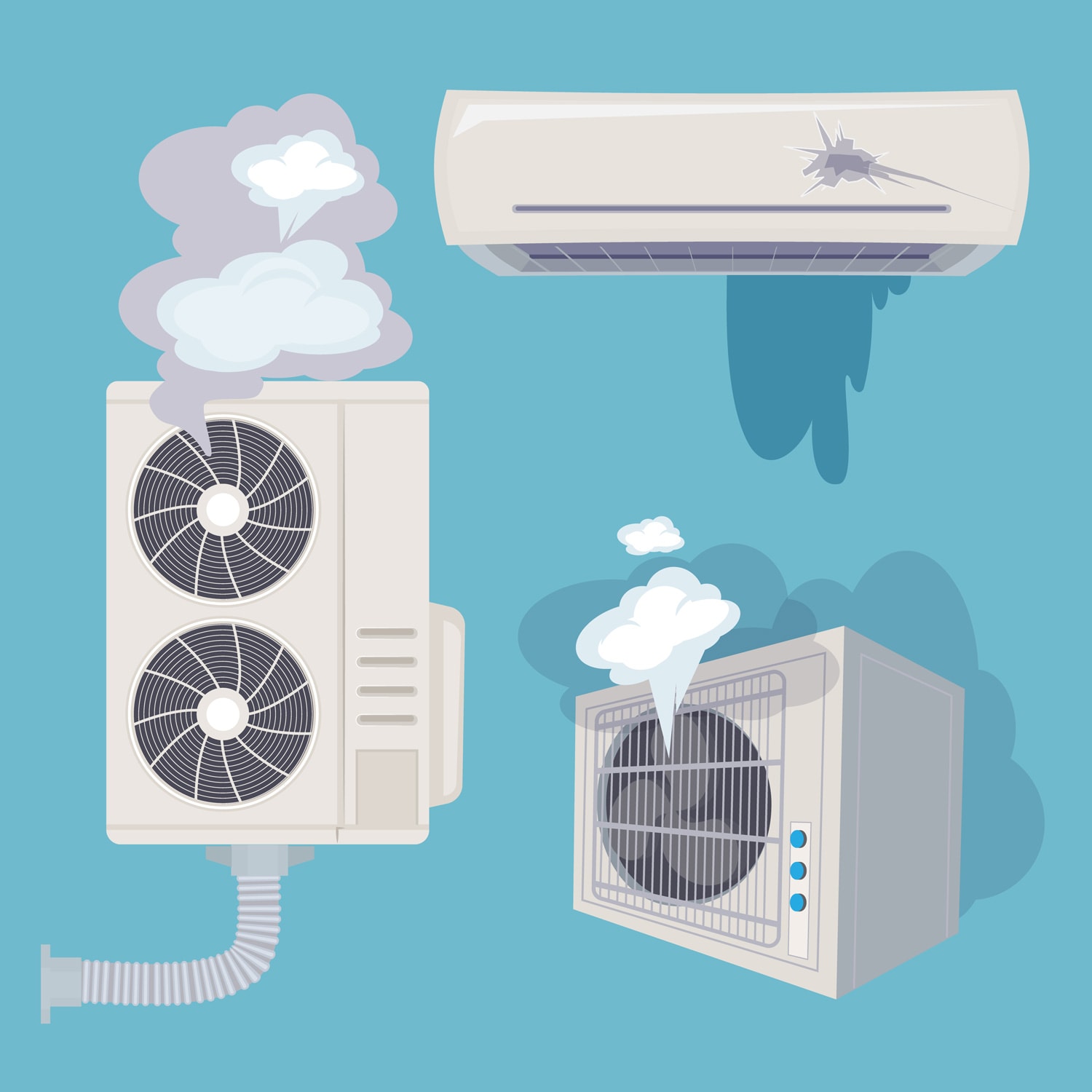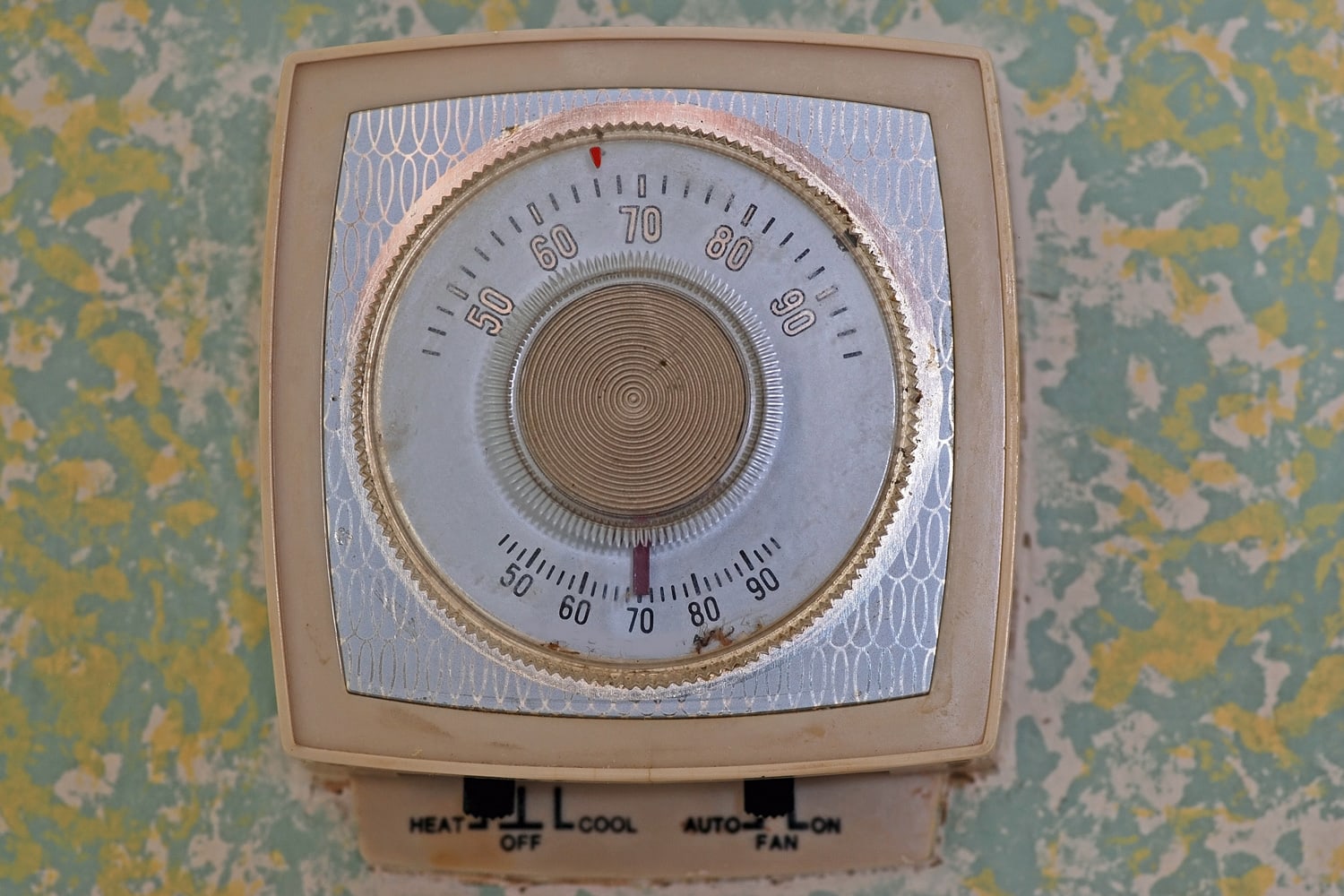Are you currently having a thermostat issue? Does it frustrate you? If so, you don't have to be anymore. If you're wondering why your thermostat won't go above 70 degrees, you're in luck. We have already researched the solution to your problem.
If your thermostat doesn't go above 70 degrees, or worse, is not working at all, you should do each of these until you find the culprit and fix the issue:
- Check if there is loose wiring
- Recalibrate the thermostat
- Inspect the thermostat to see if it is broken, dusty, or not level
- Check your HVAC unit's size to see if it is suitable for the size of your home
- Inspect your air conditioner or furnace for damage or issues
- Relocate your thermostat if it is not in an optimal location
- Clean the ducts and vents
If you still have some additional questions about troubleshooting this issue, don't worry. In this post, we'll discuss the topic in more detail. To better understand the solutions to these problems, we suggest you keep reading until the end of this article. This post will help you with the thermostat issue and the entire HVAC system itself. Without further ado, let's get into it!

What To Do When The Thermostat Doesn't Go above 70

If you don't have any experience when it comes to diagnosing an HVAC system, that's not a problem. There are some troubleshooting steps you can do yourself. But depending on the culprit of the issue, the help of an HVAC professional might be needed.
Check If There Is Loose Wiring
Loose wiring on your thermostat can cause display issues. This issue can make your room not reach the temperature you want. There is also a possibility that corrosion within the wires is happening.
And dust buildup may stop the wires from functioning correctly. However, this issue should only be fixed by an HVAC professional.
Recalibrate The Thermostat
Improper calibration is sometimes why your thermostat doesn't reach the right temperature setting. It commonly happens when you have a replacement thermostat or the power has recently been lost because of a power outage or low batteries. So, you might need to recalibrate your thermostat.
Calibrating your thermostat is very easy. To calibrate, put a precise thermometer close to the thermostat and inspect if the two devices read the same room temperature.
However, if it still doesn't work after the calibration process, you may need to purchase another one. Thermostats shouldn't need several recalibrations per year.
Have a professional check if the device is off by two or more degrees.
Inspect The Thermostat To See If It Is Broken, Dusty, Or Not Level

Something as simple as cleaning your thermostat can get it working again. Although it sounds manageable enough, we still recommend hiring a professional for this one rather than doing it yourself. It is easy to clean, but the thermostat is very sensitive.
Check Your HVAC Unit's Size To See If It Is Suitable For The Size Of Your Home
With temperature issues, it is not always the thermostat's problem. Not reaching above 70 degrees might be caused by the size of your HVAC system.
Keep in mind that there are specific HVAC system sizes for a particular amount of space. So, your system may not be enough to cool and heat your entire space, which would explain why your thermostat doesn't reach 70 degrees.
If you recently did anything on the list below, your HVAC system is the problem:
- Made an enclosed porch into a sunroom
- Started heating or cooling any new space
- Converted the garage into a living space
- Currently finished a basement or attic
- Built or extended a new room to your home
We suggest you choose any of the two options below if you did any of the above are applicable:
1. Replace your HVAC system
We suggest replacing your HVAC unit with one more suitable for your amount of space.
2. Add an extra cooling or heating source
Adding a ductless unit to your HVAC system is most recommended since it already has its digital thermostat. They will function well to produce a second temperature zone in the area where you require it most.
Check this 22 SEER ductless heat pump split system on Amazon.
Inspect Your Air Conditioner Or Furnace For Damage Or Issues

If you think the thermostat is not causing the issue, you may be wrong; the entire HVAC system could be the problem.
In this case, you will need the help of an HVAC professional. They will need to run a full diagnostic of your HVAC system. But, of course, you can suggest that they look into your thermostat first just in case you have overlooked it.
We also suggest you implement a yearly tune-up plan to maintain your HVAC system. This will make sure that everything on your HVAC system is working efficiently and correctly.
Relocate Your Thermostat If It Is Not In An Optimal Location
If your thermostat is in an area that gets very cold or extremely hot, it will appear that your thermostat is faulty. The sensors read the temperature only where it is near or the prevailing temperature rather than reading the actual temperature of the entire house.
Your thermostat may be near the window, kitchen (near the stove), fireplace, space heater, or a room with several lights. In this case, you will have to relocate your thermostat to the center of your home. The thermostat will have an accurate reading only if placed in a proper location.
Clean The Ducts And Vents
There is a possibility that your thermostat reads the wrong temperature because of dirty ducts and vents. It is also possible that the air filter is clogged. Generally, it is an issue of cooling and heating if the air can not flow well.
Moreover, your air conditioning unit or furnace may appear to run every time or shut off alone before it hits the temperature setting you set.
It would be best to clean your dirty vents and ducts immediately, or you may want a professional to do it for you. Doing so will not only solve your thermostat issue but also improve the air quality of your home and extend the life span of your HVAC unit.
Read more: How Long Does An HVAC Unit Typically Last? [And How To Make It Last Longer]
Signs That You Need To Change Your Thermostat
The parts of your HVAC unit must be working well to achieve efficiency. The thermostat, for example, is the component that communicates with your entire HVAC system. So, if you notice that it doesn't work correctly and efficiently anymore, it's time to replace it.
Below are the signs that might indicate that it's time to replace your thermostat.
HVAC Unit Keeps Turning On and Off
As mentioned above, your thermostat is communicating with the whole system. If the unit stops taking command from the thermostat, the thermostat is likely the problem. If your thermostat is frayed or damaged, it will compromise its connection to the system.
Call a professional immediately to fix it. Please don't wait for it to sustain further damage. HVAC professionals will tell you whether your thermostat is due for a replacement or not.
Unusually High Energy Bills
We are sure that everyone is always looking for different ways to lower their energy bills. But if you find the opposite happening to your bills, you might want to check your thermostat since it could likely be the problem.
When your thermostat doesn't communicate with your HVAC system correctly or correctly read the temperature, it will cause the unit to work harder than it should.
We suggest calling a professional to have it checked. Don't skip the opportunity to save money on your monthly utility bills.
Wrong Thermostat Readings
If your thermostat is working correctly, it ensures that your home doesn't get too hot or cold. But when you notice that it begins to read the incorrect temperature, it is time to consider purchasing a new one.
Thermostat Is Too Old

Just like other things, your thermostat will deteriorate and become outdated. Its lifespan usually extends up to 10 years. However, it would be best to consider purchasing a new one sooner since more efficient thermostats are continuously entering the market.
For instance, you might want to replace your mechanical thermostat with a digital one.
Click here to see this ENERGY STAR-certified thermostat on Amazon.
Continuous Temperature Changes
When your thermostat constantly changes its temperature settings without notice, it may be having a hard time changing its settings. You can try to lower the thermostat settings, and if the problem persists, consult a professional.
The HVAC System Short Cycles
This problem occurs when the HVAC system shuts off earlier than necessary, failing to meet the complete heating and cooling cycle. And if you notice that it keeps occurring, then it is presumably time to replace the thermostat with a new one.
Thermostat Failing To Respond To Settings Changes
Thermostats must immediately respond to setting changes. If it doesn't, it probably has problems. And it will undoubtedly need replacement.
In Closing
Replacing your thermostat won't hurt that much. What will hurt is to replace the entire HVAC system if you ignore your thermostat issues that will cause further and total damage to the entire HVAC unit.
For more HVAC-related posts, check these out:


